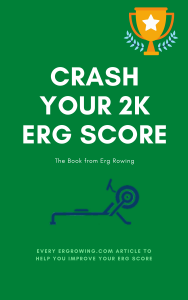1. Mileage Is Not Always The Answer
Lots of rowers believe that cyclists spend all of their training time doing miles and miles of lower intensity cycling. Not true. Cycling has moved on a lot and many cyclists now structure their workouts like we do.
During the winter, cyclists might do 3 x 20 minutes on a stationary trainer. In spring they might do some of the VO2 Max workouts rowers do. And during the summer… they do some sprint work.
But the point is that they train all of the fitness zones – everything from base endurance to sprint. And for us rowers with a much shorter 2k race distance (20 – 30 % of which is anaerobic) what does that say about the emphases we should put on our training?
2. It’s Not About The Boat (or Erg)
Lance Armstrong speaks a lot about fighting the good fight and how he attributes most of his success with his ability to persevere and overcome.
99% of the rowers I have worked with have these qualities. But it’s easy to forget that this is what makes us different. Embrace the challenge the daily grind presents and relish the fact that you are in the minority of the people on the planet who are capable of enduring such hardship as a 2k erg test.
3. Train With Power
Heart rate training has sort of gone out of fashion to determine training intensities in cycling. Lots of cyclists now use a power meter and train using wattage. After a battery of baseline tests they develop training plans scientifically geared towards working at exact intensities.
Ok I hear you say – us rowers already use power (in terms of split per 500) on the erg. But there are still a lot of erg rowers out there who still determine intensities with heart rate – alone.
4. Realise You Are A Type
Sprint or marathon? Fast twitch or slow twitch? Velodrome or Tour de France? This is one area where cycling appears to have an edge on rowing.
Choice.
Luckily for cyclists they have a massive range of events and distances to choose from when they race. Most cyclists choose events suited to their natural abilities.
We are (mostly) stuck with the 2k. The sprinters and endurance animals all rough it out in the sprint-aerobic-sprint (500-1000-500). Maybe you should play to your strengths within a 2k erg race more. Just like cyclists do.
5. Legs Legs Legs and…
Ok you get the idea. Sometimes it’s easy to forget in the jungle of information thrown upon ergers and rowers that the legs are the primary source of power in the rowing stroke.
But cyclists use more than just legs. They use a lot of upper body and lower back muscles especially during uphill climbing. And the one thing all the good guys do is to stay relaxed.
How many good cyclists have you seen grimacing and pulling and hauling on the handlebars? Not many I’d bet. It’s a waste of energy. So even though we both get some power from our upper bodies, we should always remember to stay relaxed
6. Get Set Up Right
Cycling is very smart when it comes to mechanics. Then again it needs to be. From aerodynamics to optimum power position every last millimetre is measured and adjusted.
For speed, efficiency and comfort.
Things like proper erg footplate position can make a big difference to our efficiency and power output. But don’t take my word for it. Try it.
7. Recovery
Cyclists had recovery from racing and training sussed years ago. Ever since the first big stage races, they were on the money with recovery. Rowing and other endurance sports are only catching up now. I will soon write about what I think the most effective recovery strategies are for rowing.
[mc4wp_form]


January 24, 2013 at 2:27 pm
With regard to 3 (HR/Watt/etc) you should note that split/watt/cal are mathematically equivalent. They are different expressions of the same thing. It is irrelevant which you use to measure your work load since they all are derived from exactly the same thing.
Heart Rate is a proxy for the split/watt/cal measure we take on the machine and climbs, except in very long sessions where dehydration alone will cause HR to climb, in concert with the split/watt/cal reading on the machine (erg, cycle, etc). HR is the only easily measured effort gauge for sports that do not use machines (e.g., running) and can serve the same purpose on the erg or cycle. It has the benefit of being a gauge that can be used cross discipline.
The real issue is whether the numbers (HR/Split/Watt/Cal) presented are use appropriately to design a quality training plan, and whether the athlete sticks to the plan. And of course, re-evaluating and testing along the way to make sure progress is made.
October 28, 2014 at 8:03 am
I agree with Charlie on the matter that HR is easier for other sports not using machines eg runners etc, but I have done work with many other rowers on ergs. And over a few years using HR during the same sessions it became clear to me that certain people could pull the exact same splits as to myself and other rowers, but have either a faster or slower HR. Meaning that if they were to increase or decrease their HR to match everyone else’s-it will and did have effects on training scores/times.